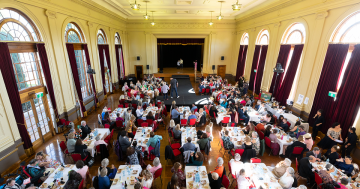
Students overestimate how often and how much their peers drink alcohol. File photo.
A campaign aimed at changing binge drinking behaviour at Australian universities is taking a different tack, based on new research showing that many students have a distorted view of how many of their peers are actually on the booze.
The Foundation for Alcohol Research and Education (FARE), in collaboration with the University of Canberra and the Australian National University, has launched Reduce Risky Drinking, which aims to tackle the misperceptions that can cause students to increase their drinking once they reach university.
A survey of first-year ANU and UC students confirmed, unsurprisingly, that university students are among Australia’s heaviest drinkers with more than two in five admitting to binge-drinking on a regular basis, with many believing this is normal.
Of those students surveyed who consume alcohol, the vast majority (79.5 per cent) drink to get drunk, with almost a quarter of these (22.3 per cent) doing so once a week or more.
FARE says Australia’s current drinking guidelines recommend no more than two standard drinks a day to prevent long-term, and no greater than four standard drinks to prevent short-term alcohol-related harm.
But the survey also found significant differences in students’ perceptions of their peers’ drinking habits compared to what they really are, including that students are nearly five times more likely to report higher levels of consumption by others in their year compared to their own.
FARE Chief Executive Michael Thorn said this showed that what many considered to be the social norm was actually not the case.
“The campaign makes the point in the first instance: Don’t accept on face value this view that you have to engage in heavy drinking because you think others are doing it because the data shows most of them are not,” he said.
The problem was that binge drinkers grabbed people’s attention, creating the impression it was normal behaviour.
“Behaviour associated with binge-drinking is often highly visible, giving students the impression that this sort of behaviour is ‘normal’ at uni. Less noticeable are the actions of students who aren’t binge-drinking, and so undergraduate students tend to consume alcohol at much higher levels, in line with their perception of ‘normal’ university behaviour,” Mr Thorn said.
Mr Thorn said the campaign was needed, as alcohol use at universities has long been a concern, with recent reports highlighting its contribution to unacceptable and antisocial behaviour on campus, including violence, sexual assault and hazing.
He said the research and campaign were timely as universities continued to respond to the recommendations from the Broderick Report on sexual assault on Australian campuses.
“It’s hard to know how serious uni administrations are taking all this, they are saying all the right things, they were the ones who initially supported Elizabeth Broderick’s work but I don’t get a sense of a full-on assault on these behaviours, much of which is linked to the consumption of alcohol,” Mr Thorn said.
Canberra campuses had particular challenges due to the large number of overseas students, many of whom are from countries where alcohol does not have a big role.
“And that can be confronting and quite dangerous,” he said.
ANUSA President Eleanor Kay said that students treated drinking almost like a competitive sport but that attitude needed to change.
She said the abuse of alcohol was linked to violence against women and hazing incidents on campuses across the country.
The campaign will support students to talk about risky drinking behaviours with their peers, by providing information through print and social media channels, encouraging students to get involved and helping to create a new norm that does not involve risky drinking, with the hashtags #ReduceRiskyDrinking and #CreateANewNorm.
Mr Thorn said that while it won’t be about the big drivers of alcohol consumption such as availability, price, and marketing, the campaign wouldl be accompanied by information about short and long-term harms.
“Getting the message through about long-term harm to young people is a tough ask, but it is certainly part of the messaging,” Mr Thorn said
The campaign and student survey are part of a broader project, Risky Drinking among undergraduate university students – a social norms-based approach, funded by a three-year ACT Health Promotion Grant.
A follow-up survey will be undertaken in 2019 to assess the impact of the campaign.















